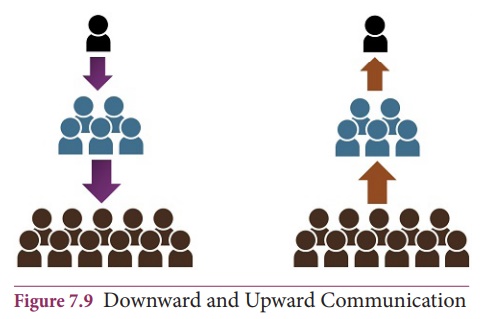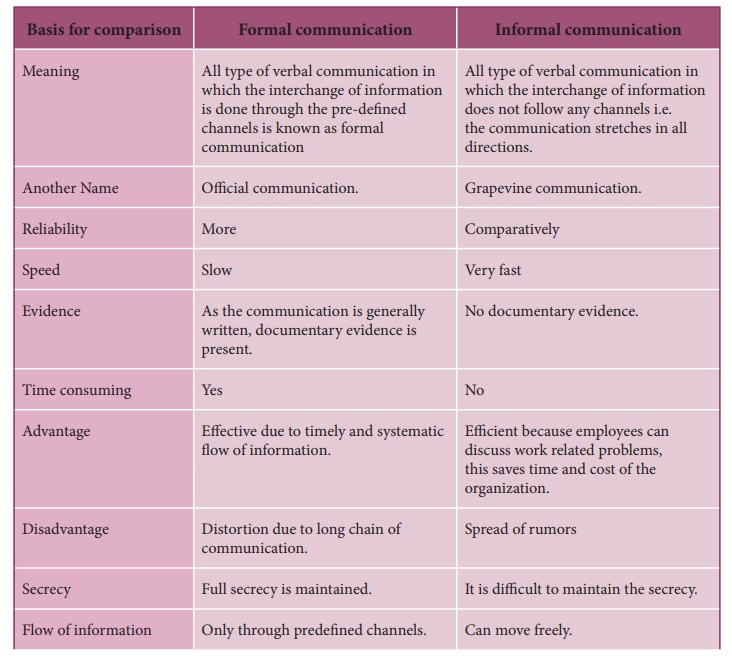Chapter: 12th Office Management and Secretaryship : Chapter 7 : Leadership and Communication
Types of Communication
Types of Communication
Organisational
communication may be either formal or informal in nature.
Formal communications
Formal
communications are those which flow through formally established channels as
depicted in the formal organisational chart, and are concerned with work
related matters. All orders, instructions and decisions are communicated to the
subordinates through this channel. Formal communications can flow in three
different directions – downward, upward, and horizontal or laterally among
various departments.

Downward communications
Downward
communication are those communications that flow from superiors to
subordinates. Through downward communication, the superior direct the efforts
of his subordinates, defines the goals, and objectives of the organisation to
them.

Upward communications
Flow from the subordinates
to the superiors, and are usually known as feedback. These enables the
management to assess how far the downward communication has reached,
understood, accepted, and carried out. These can help the management to know
the employee grievances and receive valuable suggestions from the people at
lower levels.
Horizontal or lateral communications
Refers to the
communications across the subordinates who are working at the same level in the
organisation. Such communications help coordinate the activities of different
departments.

Informal communication
Informal
communication or the ‘grapevine’ as it is commonly known flows through the
structure less network that develops spontaneously within any organisation.
People who know each other are bound to talk and most often they talk about the
organisation where they work. Employees want to know what is going on in the
organisation and when they lack the information they seek it from others. The
grapevine carries two types of information – work related and people related.

Difference between formal and informal communication

Related Topics